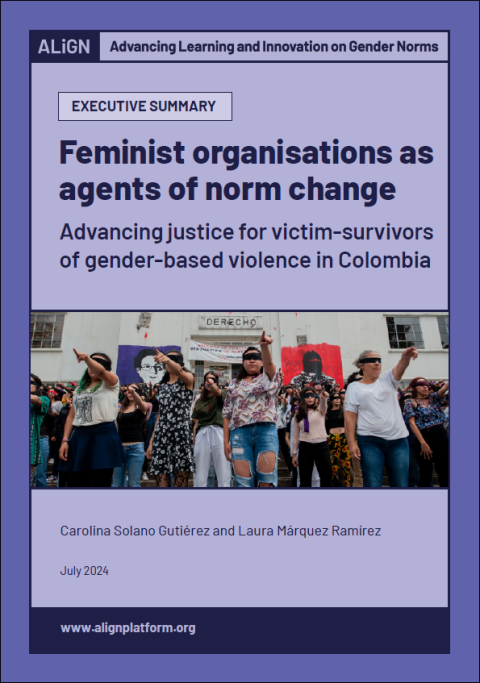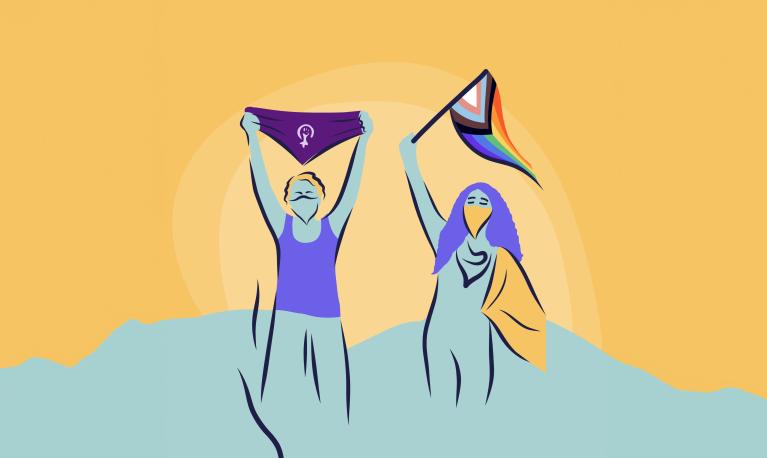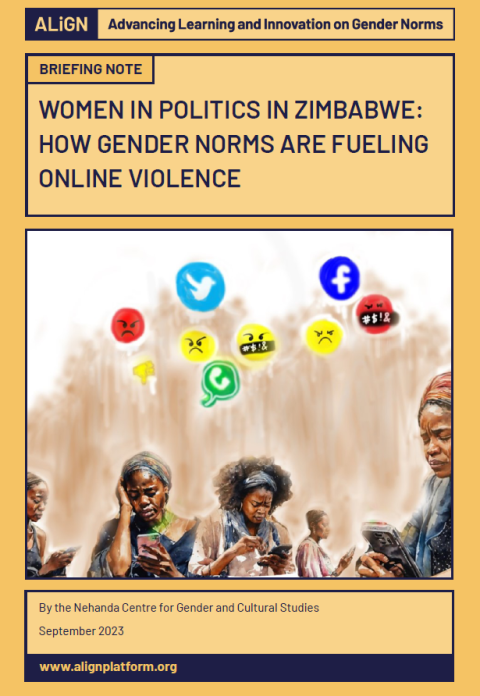
- Report
- 7 Marzo 2022
Hashtags, memes and selfies: can social media and online activism shift gender norms?
- Author: Katie Washington, Rachel Marcus
- Published by: ALIGN

This report is the second in a two-part series that explores social media as a space for changing patriarchal gender norms.
Feminists through their movements are making greater use of digital spaces to galvanize activism, gain media attention and bring about policy change. It is increasingly clear that activism both online and offline reinforces and facilitates the other, with social media providing a new and constantly evolving space in which gender norms are reinforced and challenged. This ALIGN Report focuses on how social networks are shifting knowledge about gender inequalities, as well as attitudes and behaviour.
Beyond supporting coalition-building, campaigning and lobbying, online campaigns aim to achieve specific goals such as the implementation of gender-based violence laws (#NiUnaMenos), or the removal of taxes on menstrual supplies (#HappytoBleed). More than just ‘slacktivism’, this report traces how the rise of online activism is generating real-world transformations in gender norms and where in a matter of seconds, a social media campaign can go viral and affect offline life in many ways.
This research also examines the role of social media in spreading misogyny and other forms of hate, with online gender-based violence a real risk to women’s rights. From anti-rights movements, to anti-feminist and anti-gender content promoted on the Manosphere, online misogyny is explored in some detail as a barrier to digital activism on gender norms.
Key messages:
- Changing gender norms through social media activism can happen in four main ways: 1) mobilising campaigns; 2) amplifying messages; 3) sharing knowledge and reframing perceptions, and; 4) building a like-minded community.
- Hashtags, memes and awareness-raising content are key to women’s successful activism online. Social media helps make the personal political, build momentum beyond geographic boundaries, and facilitate networks that reach and mobilise people outside of traditional offline activist spaces.
- Different social media features (live videos, selfies) can be used to subvert gender stereotypes or break taboos. This breaks the silence on persisting gender inequalities and starts discussion of certain issues that have been off limits.
- Gendered online violence against women exerts a ‘silencing effect’ on women’s right to participate in public spaces. Content that challenges gender norms is particularly likely to attract abuse and backlash, with organised ‘anti-feminist’ and ‘anti-gender’ movements posing a real threat to women’s rights and safety online.
- Tags:
- Social media, Media, Social movement, Technology
- Countries / Regions:
- Global
Related resources
Report
18 Febrero 2022
Published by: ALIGN

Blog
10 Febrero 2025
Published by: ALIGN

Blog
19 Diciembre 2024
Published by: ALIGN

Report
19 Noviembre 2024
Published by: ALIGN, Mexfam

Report
30 Septiembre 2024
Published by: ALIGN, Frente Nacional para la Sororidad

Report
4 Septiembre 2024
Published by: ALIGN, SISMA Mujer

Report
5 Agosto 2024
Published by: ALIGN

Report
17 Julio 2024
Published by: ALIGN

Report
5 Febrero 2024
Published by: ALIGN

Blog
8 Enero 2024
Published by: ALIGN

Blog
24 Noviembre 2023
Published by: ALIGN

Briefing paper
2 Octubre 2023
Published by: ALIGN, Nehanda Centre for Gender and Cultural Studies
